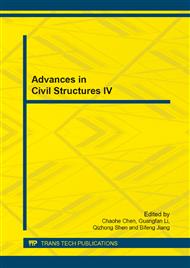p.805
p.810
p.814
p.818
p.822
p.830
p.835
p.839
p.846
A Refined Theory of Moderately Thick Plates According to Exposition of the Classical Technical Theories, Theoretical Aspects
Abstract:
In this paper we propose a new refined shear deformation plate theory. This theory possesses a series of desirable features, the most salient of which areas follows: (i) The loads, which are usually considered to be applied on the middle surface of the plate, are applied in this new theory on the top surface of the plate; (ii) The equations deduced provide the same order of accuracy as several theories with second order shear deformation effects; (iii) It constitutes a theory, in the sense defined by Love, since it gives easy expressions for application to problems in different fields in architecture and engineering.
Info:
Periodical:
Pages:
822-829
Citation:
Online since:
July 2014
Authors:
Price:
Сopyright:
© 2014 Trans Tech Publications Ltd. All Rights Reserved
Share:
Citation:


